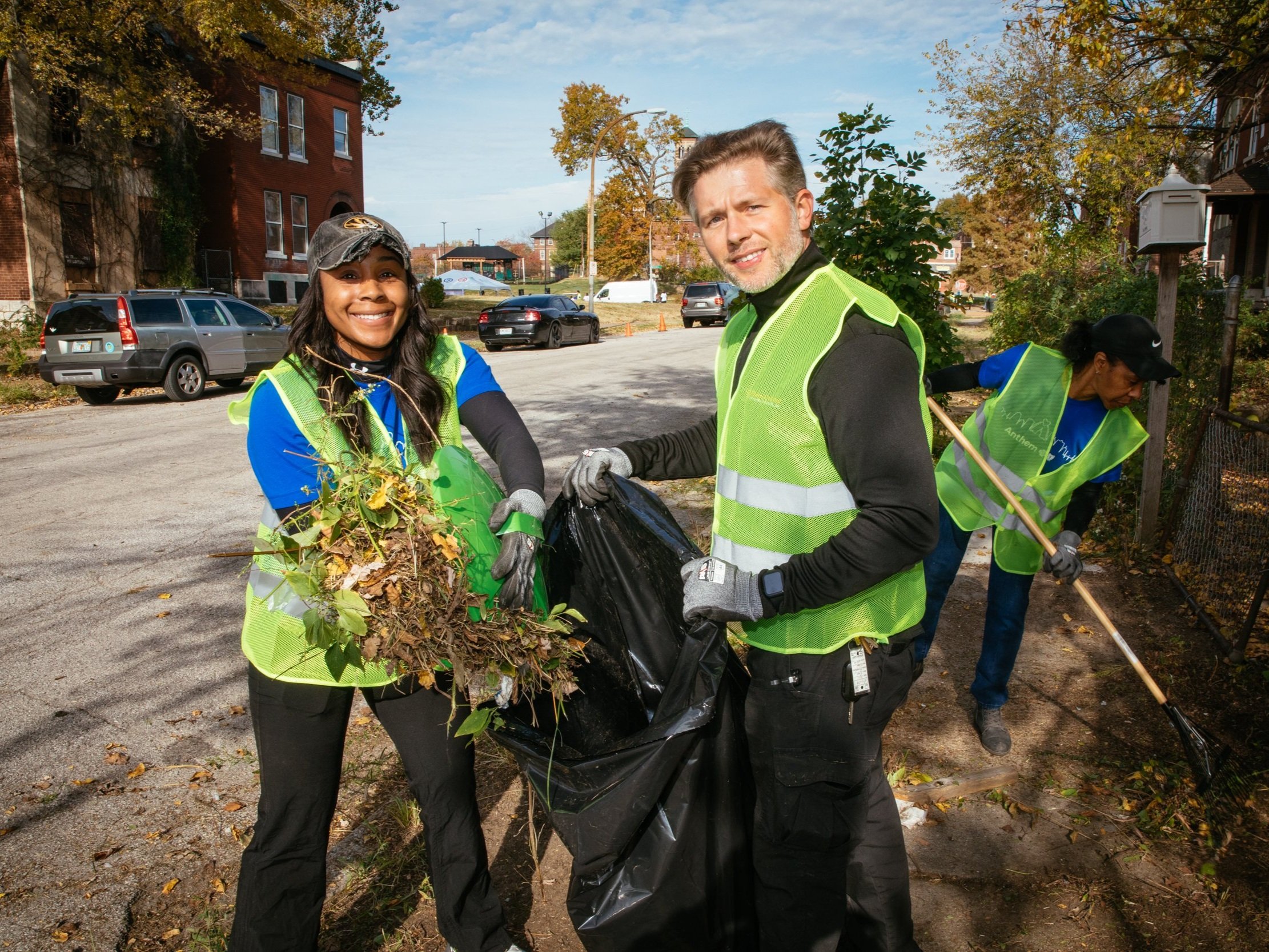- Stories
Neighborhood Cleanups Powered by ARPA Funds
St. Louis community organizers band together to bring out the best in their neighborhoods.

St. Louisans aren’t afraid to get their hands dirty for a good cause.
Over the last 6 months, the St. Louis Association of Community Organization (SLACO) has recruited a small army of volunteers in a concerted effort to clean up the streets, sidewalks, alleys, and community spaces in 15 different neighborhoods across the city.
Last spring, SLACO launched its beautification campaign, the Sundy Whiteside Keeping It Clean Initiative (KIC), beginning with the inaugural cleanup of Carr Square on April 16.
Bolstered by ARPA funds, participating residents spent each weekend over the following months tackling a different neighborhood. According to SLACO Executive Director Kevin McKinney, the project set out to “not only enhance the physical landscape of our city, but also to nurture a culture of care, collaboration, and community.”
From picking up litter on the streets to clearing out playgrounds choked by overgrowth, the cleanup crews, composed of local volunteers as well as paid “youth ambassadors,” worked to make their neighborhoods safer and more beautiful for residents of all ages – but especially the younger generation.
“It’s very important that kids can come out and play in the communities they live in. Not having to cross town, go across the city, but walk out the door and come to their local parks,” Ron Hubbard, one such youth ambassador, told First Alert 4.
SLACO saw the KIC Initiative as an opportunity to jumpstart potential young leaders’ engagement in public affairs and investment in community growth. So with the aid of ARPA dollars, they hired a cohort of young adults aged 18-24 to help spearhead the cleanup program.
Studies show that cleanup projects like these have a ripple effect of benefits, including:
- Increased awareness of the negative effects of pollution & mindfulness of volunteers’ own waste disposal habits
- Greater sense of pride, empowerment, and responsibility for the community’s success
- Higher participation in future community activities
- Stronger personal bonds between neighbors, forging connections across generational and cultural gaps
- Decreased crime rates
“By coming together, we can create lasting change and set a precedent for community-led initiatives,” McKinney said.
The more residents give back, the stronger the city becomes.
On September 14, SLACO’s cleanup event aligned perfectly with Dutchtown’s 3rd annual Food Day and Community Festival, an all-day celebration of the neighborhood’s multicultural roots. While festival attendees thronged at Meramec St. and Virginia Ave to soak up live music, savor delicious local fare, and sample the wares of resident artisans, just down the street, a group of equally passionate volunteers gathered to give Marquette Park a makeover.
It was the KIC Initiative’s biggest turnout yet.
“We did a heck of a job,” said SLACO Project Manager Keith Antone Willis Sr., who estimated that over 100 volunteers from 15 different organizations joined their efforts. “People want to live in a clean neighborhood, where we have safe places for our kids to play.”
“It’s amazing to have this large amount of people out volunteering,” said Alderman Shane Cohn, a longtime resident of Dutchtown.”It generates a sense of pride in the neighborhood that we call home.”
Whether they’re breaking bread or breaking a sweat, St. Louis citizens are the core of what makes the city beautiful: a diverse network of vibrant communities united by a desire to grow – together.
Frequently asked questions
The American Rescue Plan Act (ARPA) is a $1.9 trillion federal aid package passed by Congress in March, 2021 to provide financial aid to families, governments, businesses, schools, nonprofits and others impacted by the pandemic.
The City of Saint Louis was awarded $498 million in recovery funds from the American Rescue Plan Act. These funds represent a lifeline for thousands of families in our city who have been deeply impacted by the pandemic and resulting economic crisis. You can see how ARPA dollars are being distributed on the ARPA Funding Tracker.
Visit our American Rescue Plan Resource Guide. This is a one-stop shop where you’ll find all the programs currently available to you and your family. It includes instructions on how to apply.
Learn how to receive ARPA funding to power up your business or non-profit on our For My Business page.
Tens of thousands of families have benefitted from programs including direct cash payments, job training, health resources and free transportation. Explore available programs for you and your family.
All funds must be obligated by the end of 2024 and spent by the end of 2026.
Here is a list of our current and past RFPs.
